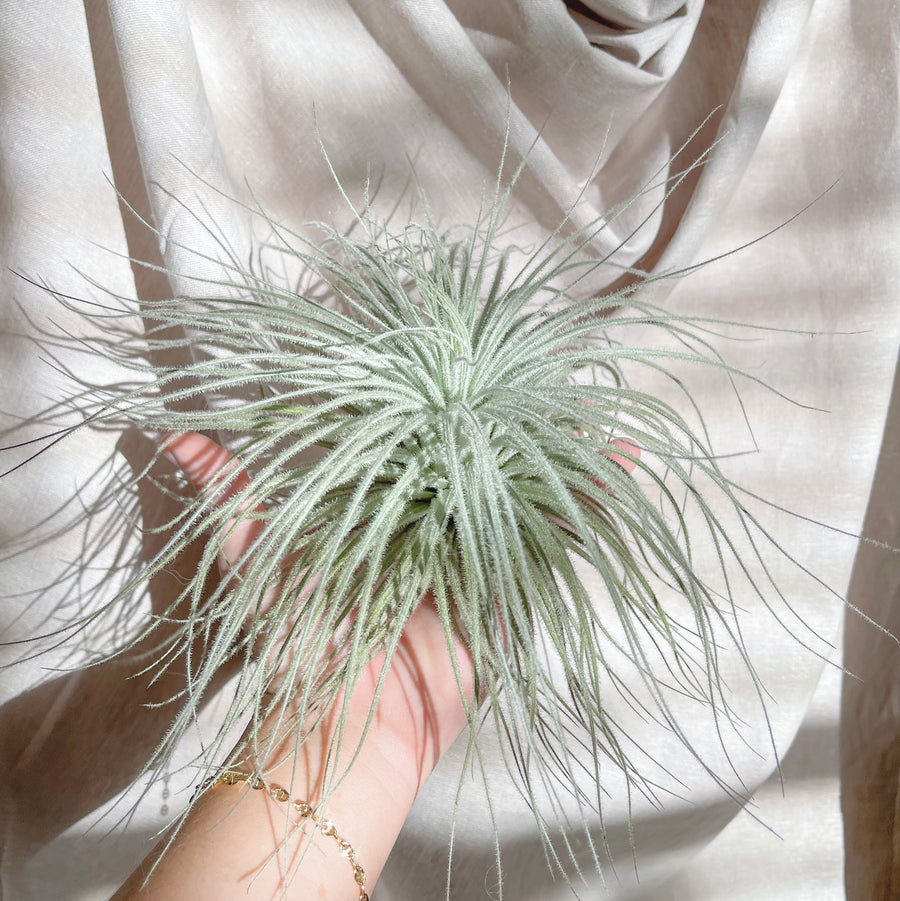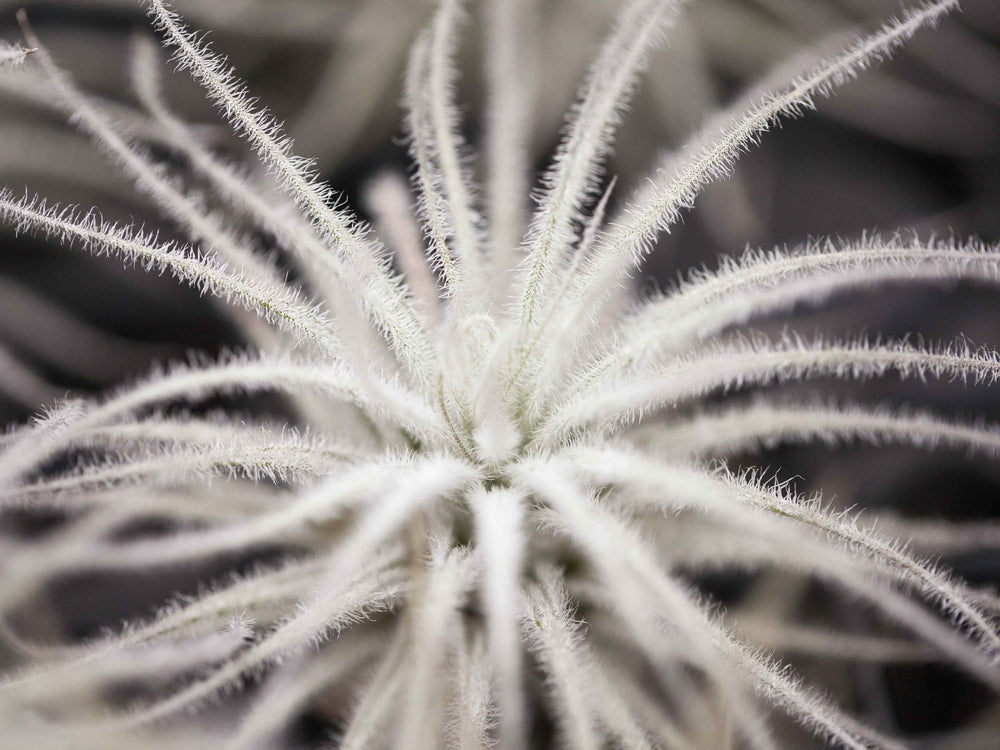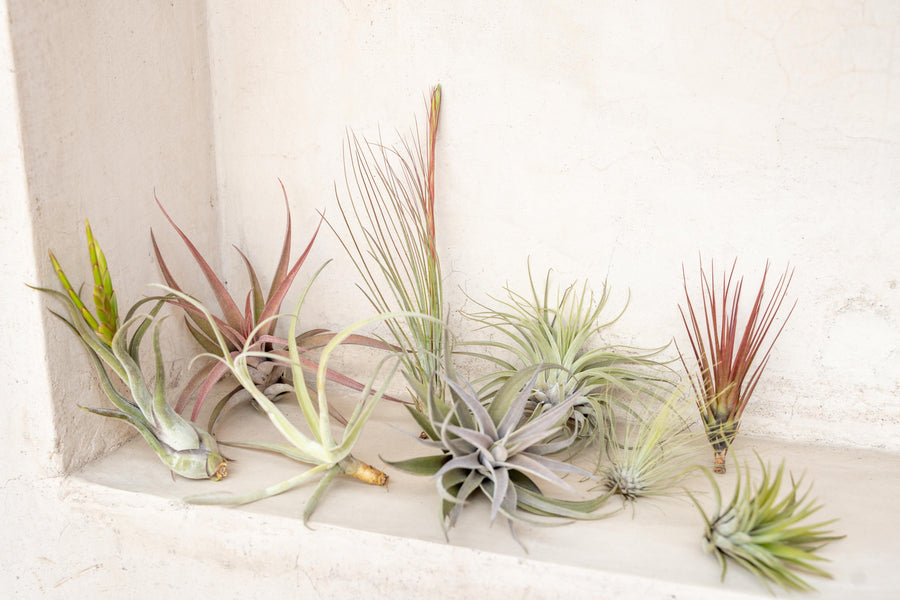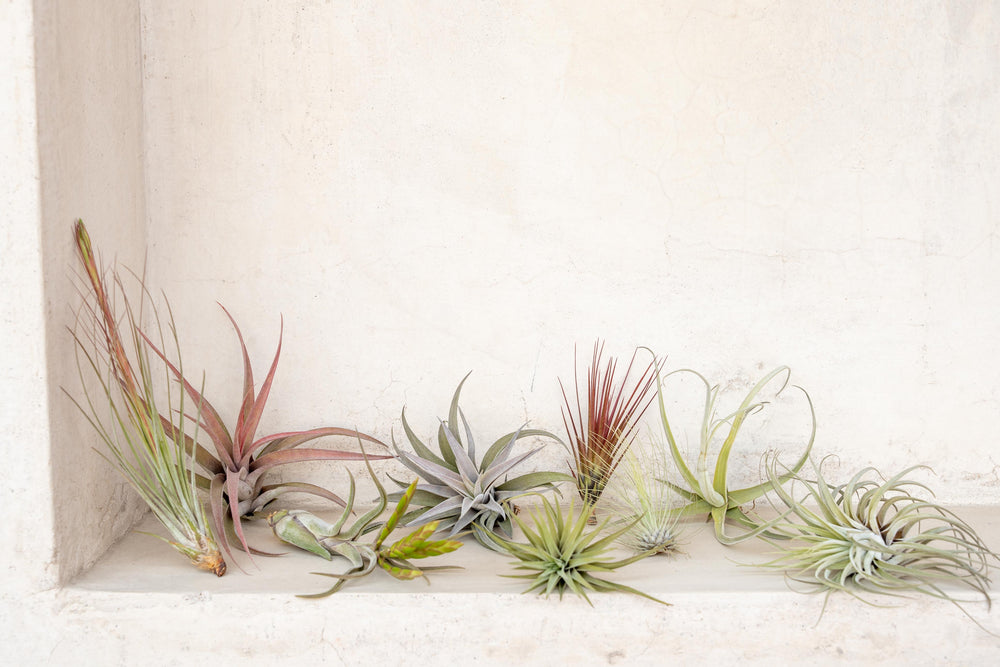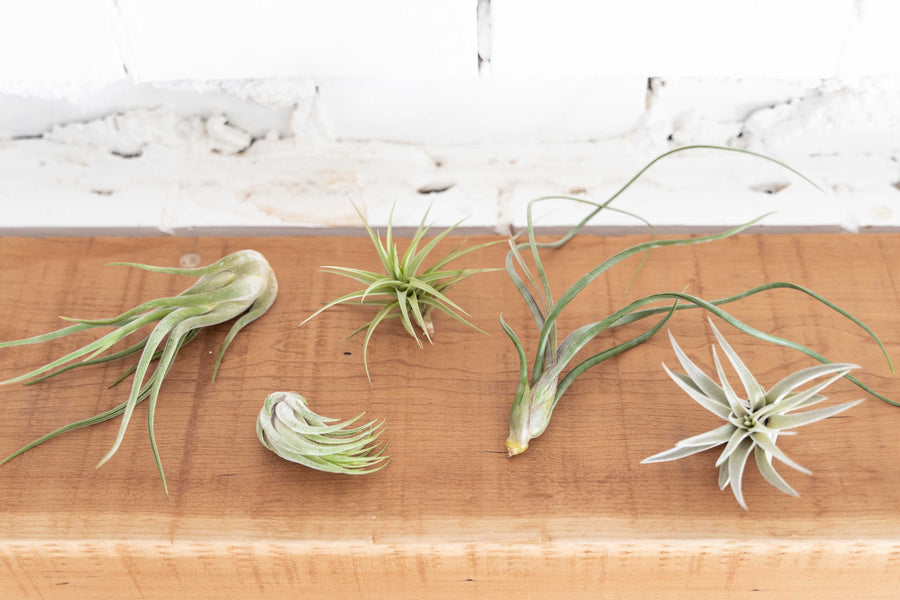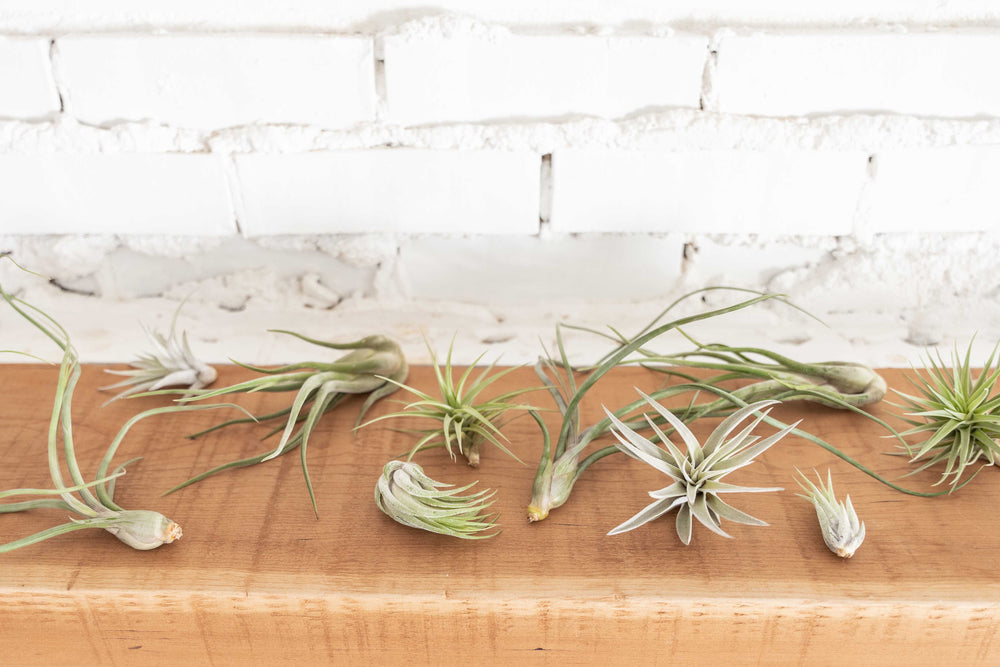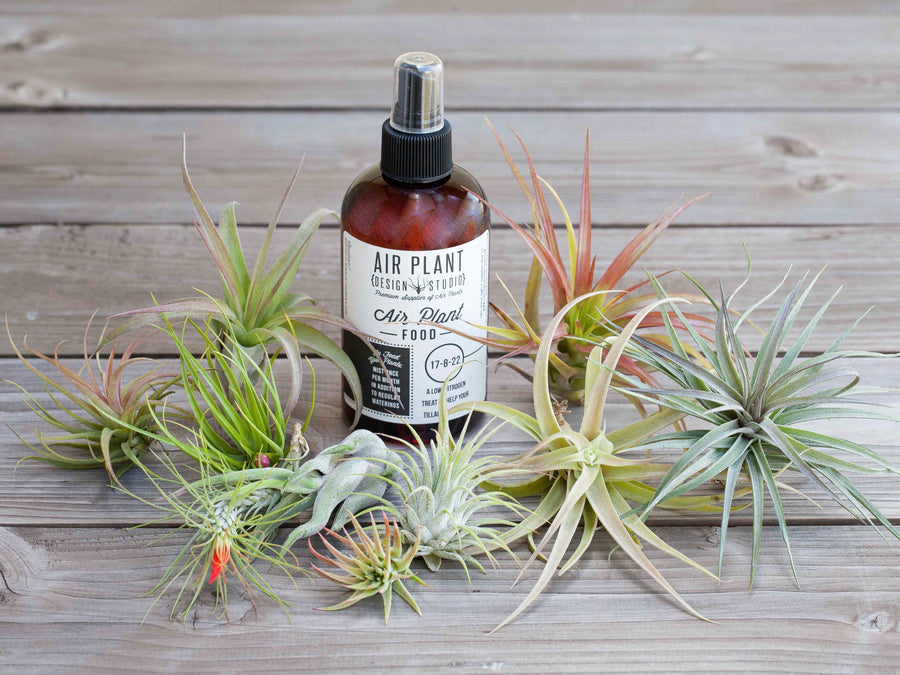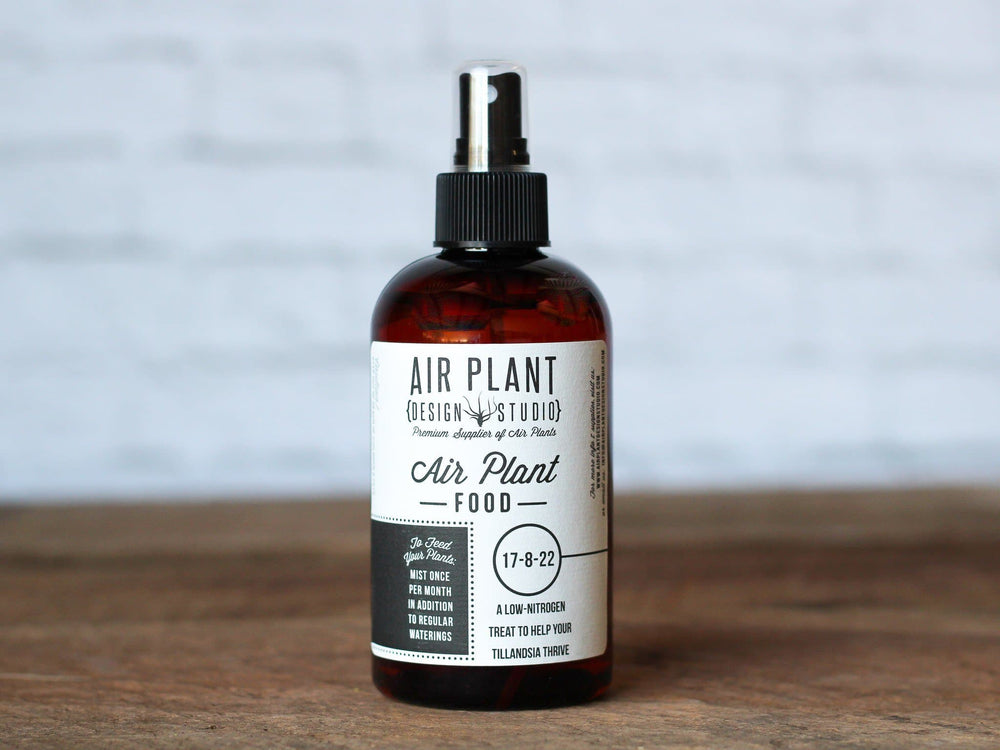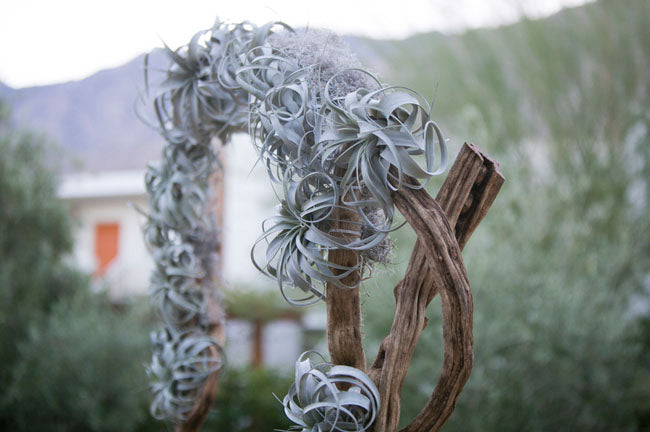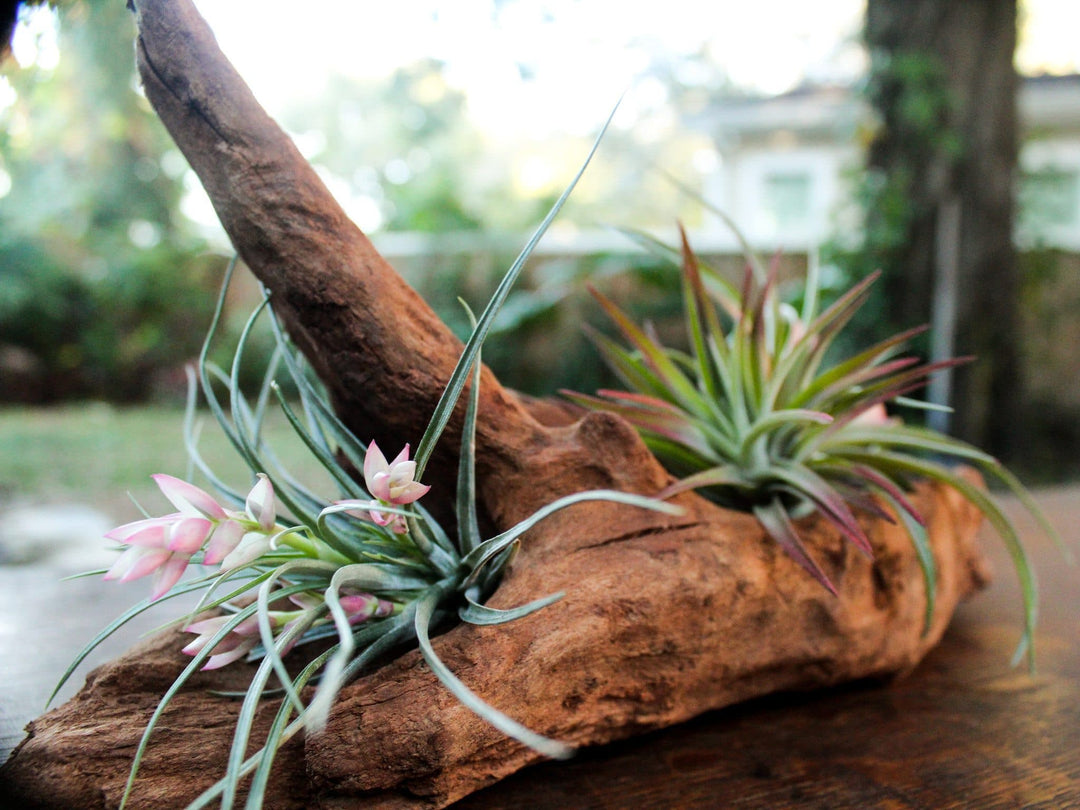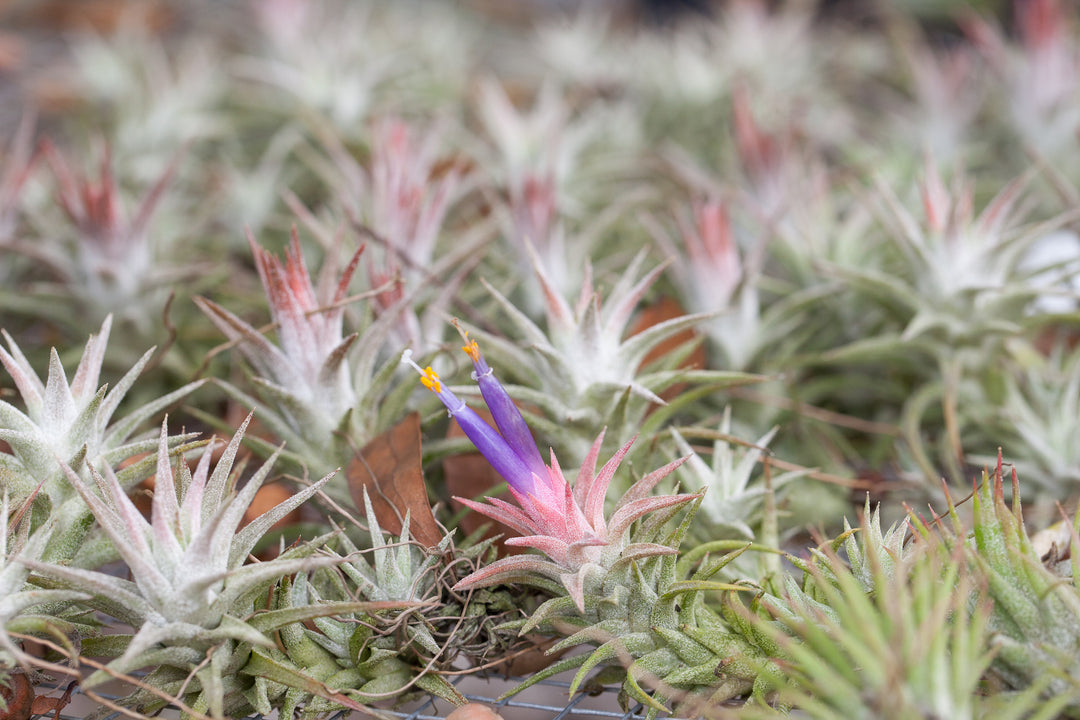All About Air Plant Roots (And Why They Don't Need Soil)
Tillandsia air plants are part of the family of plants known as epiphytes, which means that they anchor themselves to another plant but are not parasitic. Ferns, Tillandsia (and other Bromeliads), orchids, and most lichens and moss, all carry this epiphyte designation. These plants often grow on tree trunks or branches in tropical rainforests allowing them to get filtered sunlight through the tree's canopy. These epiphytes get everything that they need to survive through their leaves from the sun, moisture from the air, and organic matter that falls their way. Tillandsia do not use their roots for nutrients, just as an anchor.
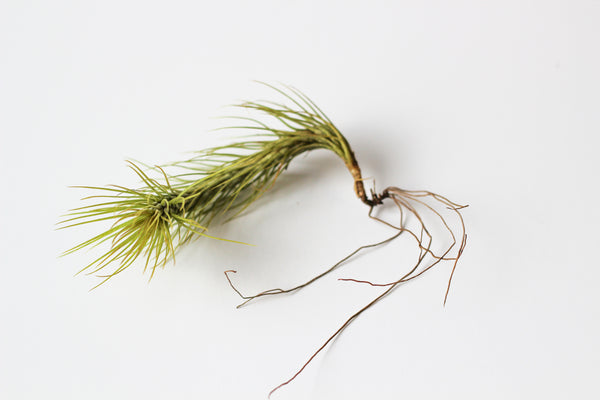
Tillandsia funkiana with roots attached
Epiphytes have adapted and evolved over the years to not need roots, because in the densely populated tropical rainforests, competition for light, water, air, and nutrients can be pretty aggressive.
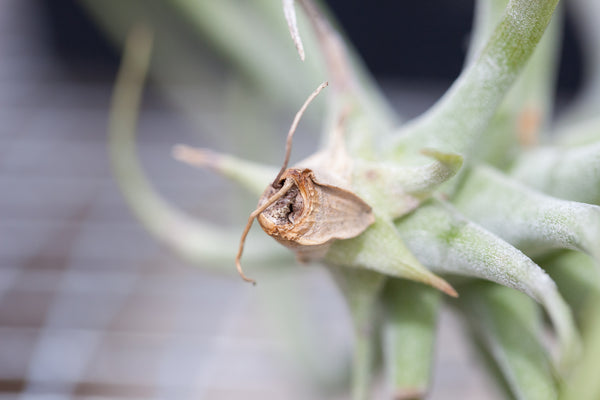 T. aeranthos hybrid with roots
T. aeranthos hybrid with roots
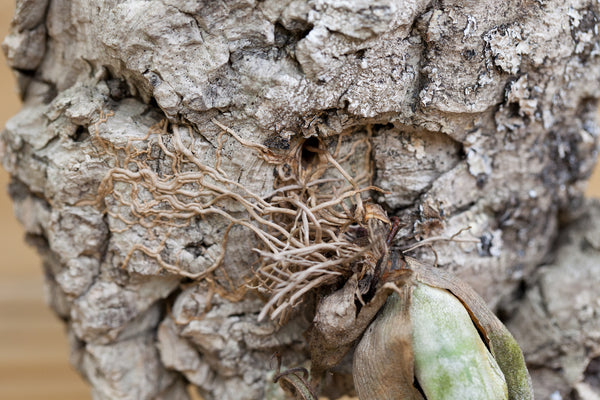
T caput medusae with roots mounted on driftwood
Since air plants are epiphytes, they don’t require soil to thrive. This adaptation allows them to live in high spaces in the upper story of the rainforest that other plants can’t get to. Air plants also have trichomes that allow them to absorb their nutrients from the air up in these moisture-rich tree canopies.
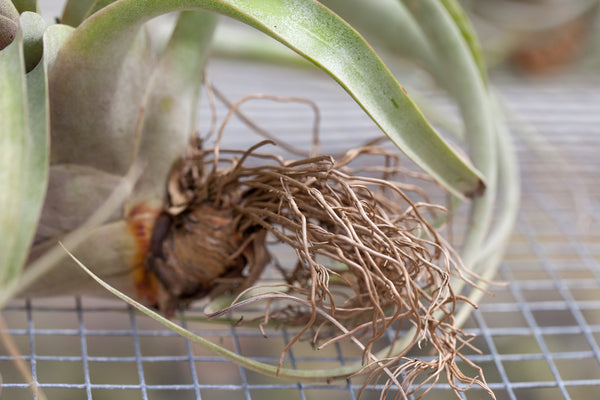
Roots on the T. xerographica air plant
You may be thinking well, that’s interesting, but what you should do about their roots if they don’t really need them? While their roots will continue to grow if left alone, you can easily trim them for cosmetic reasons. Just make sure you don’t cut too close to the bottom of the plant, as this can cause damage. You can also use their roots to anchor the plant to a piece of driftwood, hanging planter, wreath or just about anywhere else you can imagine! Once they have attached to the wood with their roots, they will have a pretty strong anchor to hold them in place.
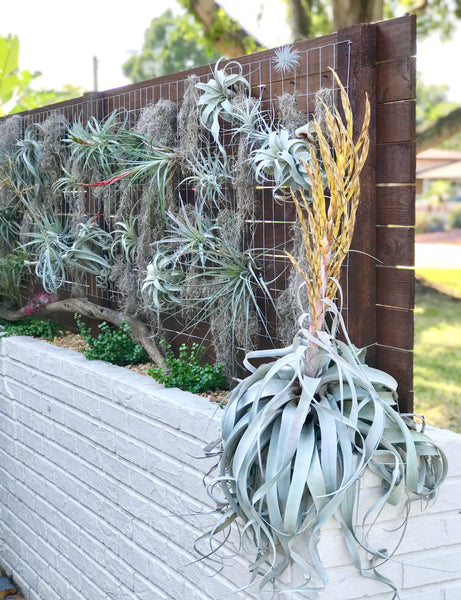
Living wall with Tillandsia air plants
Because of their soil-free nature air plants are super versatile and can be displayed just about anywhere they get good indirect light and air flow. You can nestle them in a glass globe, create beautiful living art, or send them as a gift to a friend across the country.


